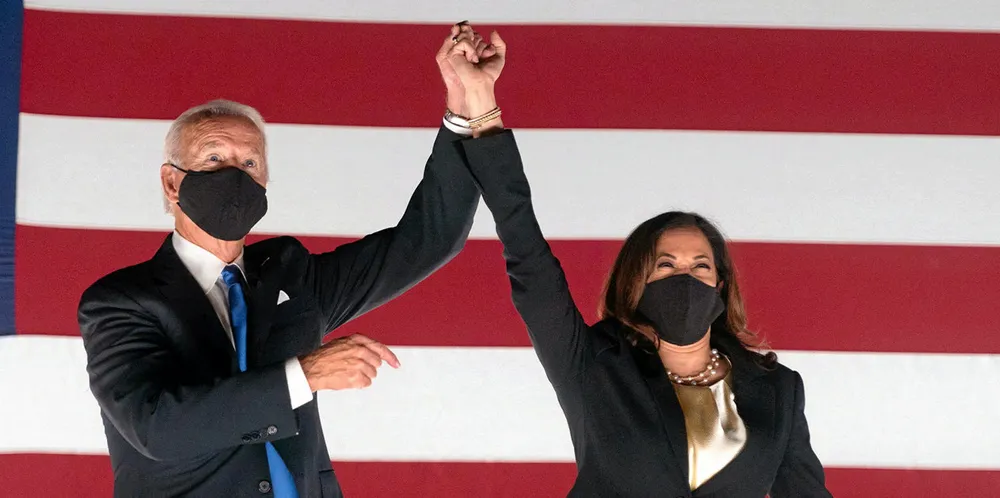US wind industry calls on Biden for 'bold and sensible' energy policy shift
Clean energy targets, carbon cap-and-trade, permitting and competition regulation among recommended focuses for President-elect from American Wind Energy Association

The US wind industry has proposed multiple actions that President-elect Joe Biden and the next Congress in 2021 can take to accelerate renewables deployment and start the nation on a path toward a clean-energy-powered future.
Green is the new black. Subscribe to Accelerate
Get the market insight you need into the global oil & gas industry's energy transition – from the new newsletter from Upstream and Recharge. Sign up here
AWEA’s four so-called regulatory “pillars” include clean energy targets and carbon policies to drive renewable energy to meet climate and economic expansion goals; enlarging interstate electric transmission to deliver wind and solar to consumers at lowest cost; expediting federal permitting of renewables to ensure development can keep pace with clean energy goals; and removing competitive barriers for renewables to reduce decarbonisation costs.
“America begins this new decade with the chance to shape an affordable, thriving energy future defined by clean electricity. Our country’s leaders must now move forward with bold, sensible policies to create that future, or risk leaving hundreds of thousands of new jobs and hundreds of billions in investments behind,” said AWEA CEO Tom Kiernan.
In the Senate where Biden served 36 years, Republicans hold a 50-48 edge. The state of Georgia, which he narrowly won, will hold run-off elections on 5 January for both its senators. Should Democrats prevail, the Senate would have a 50-50 party split for the first time since 2001.
The US Constitution specifies that the nation’s vice president, who will be Kamala Harris, is the president of the Senate. Her vote would only count if affirmative and is necessary to break a tie in some matter such as certain legislation.
The wind industry is calling on Biden in his first 100 days in office to issue executive orders to set a national policy to achieve 100% clean energy no later than 2050 and commit the federal government to purchase renewable energy for 35% of its electricity supply by 2025.
Those moves would not be legally binding, however, as this would require Congress to legislate.
AWEA is also calling for another executive order that would set a 2030 permitting target for 55GW of renewables projects on public lands including 25GW of offshore wind, which is roughly equal to capacity procurement commitments so far by east coast states.
There is the renewed call, too, for a more streamlined federal permitting process for renewables, particularly for larger onshore projects and all those offshore, starting with five more offshore wind lease auctions by 2025 and more rapid adminstration to get the ten currently in the pipeline cleared for construction.
It also is asking Congress to provide more funding for various federal agencies and departments to increase staff dedicated to reviewing proposed renewables projects to ensure timely processing.
Among its legislative priorities, AWEA wants to see Congress enact a federal clean energy/renewable electricity standard that would put the US on a trajectory to meeting a national clean energy target, as well as the creation of a federal carbon price with either an economy-wide fee or a cap-and-trade programme.
Neither proposal is likely to advance given opposition from most Senate Republicans and some Democrats, who in 2010, failed to advance a House bill to create a cap-and-trade system when they were in the majority.
The AWEA paper also calls for a technology neutral production/investment tax credit based on carbon emissions to provide “a level playing field among energy generation sources”.
Both the wind and solar industries have made electric transmission planning and grid modernisation top legislative and regulatory priorities for 2021. A key focus is to improve inter-regional planning and infrastructure to allow delivery of lowest-cost energy resource from the country’s underutilised vast interior to load centres.
The AWEA paper proposes a federal investment tax credit to help drive long-term, private sector-led expansion and upgrade of the power grid. This idea could gain traction in the next Congress as part of a broader infrastructure bill that both parties say they want.
Wind and solar are placing emphasis on removing competitive barriers to renewables. These include changes to a federal tax code that favours development of fossil fuels and orders issued by the Federal Energy Regulatory Commission that interfere with state decisions on electricity supply mix.
(Copyright)